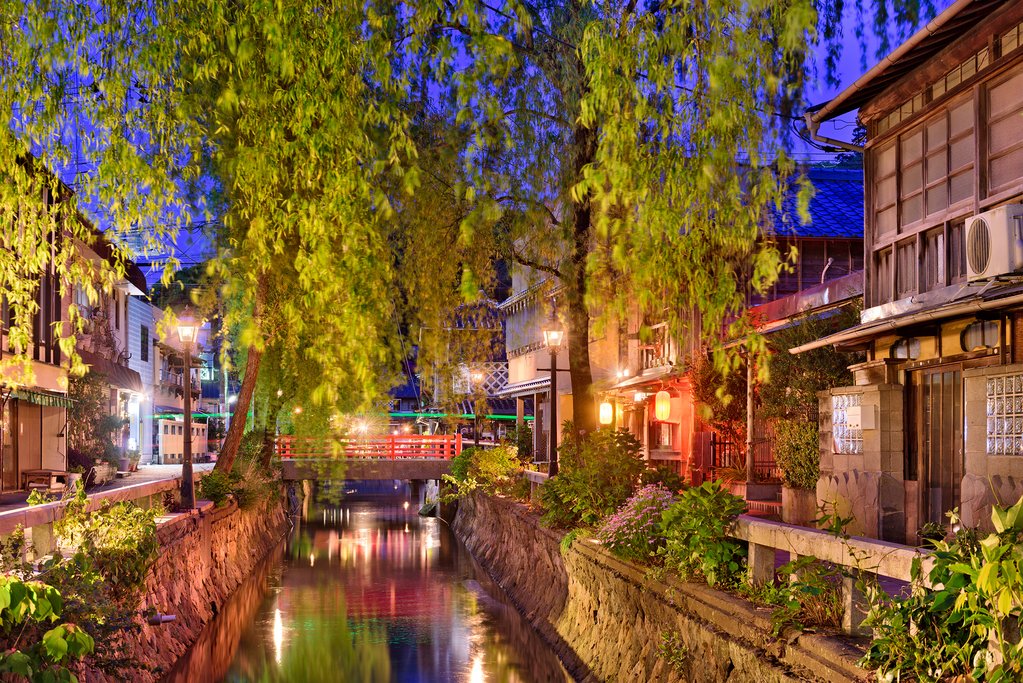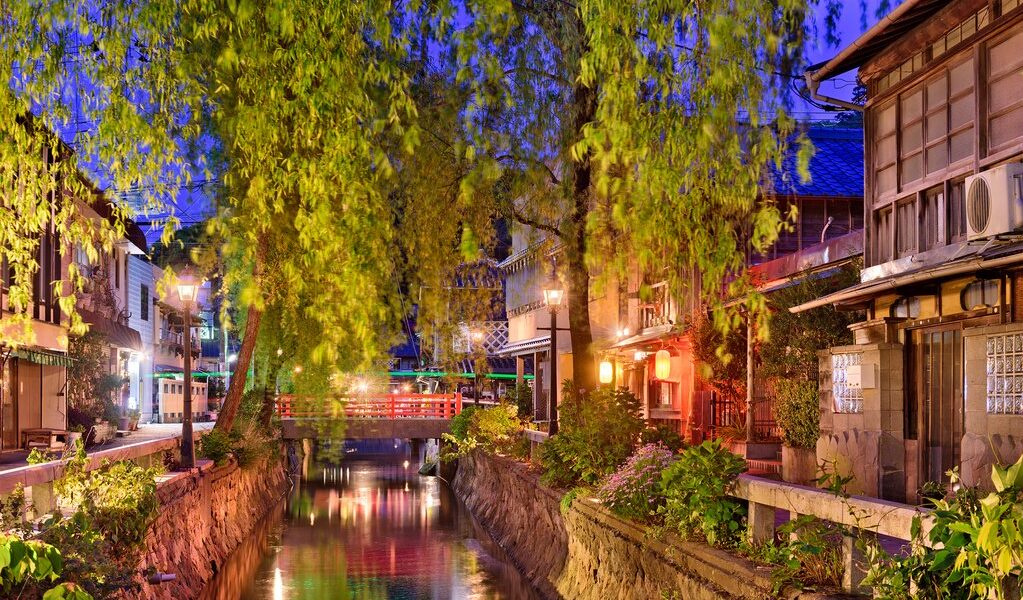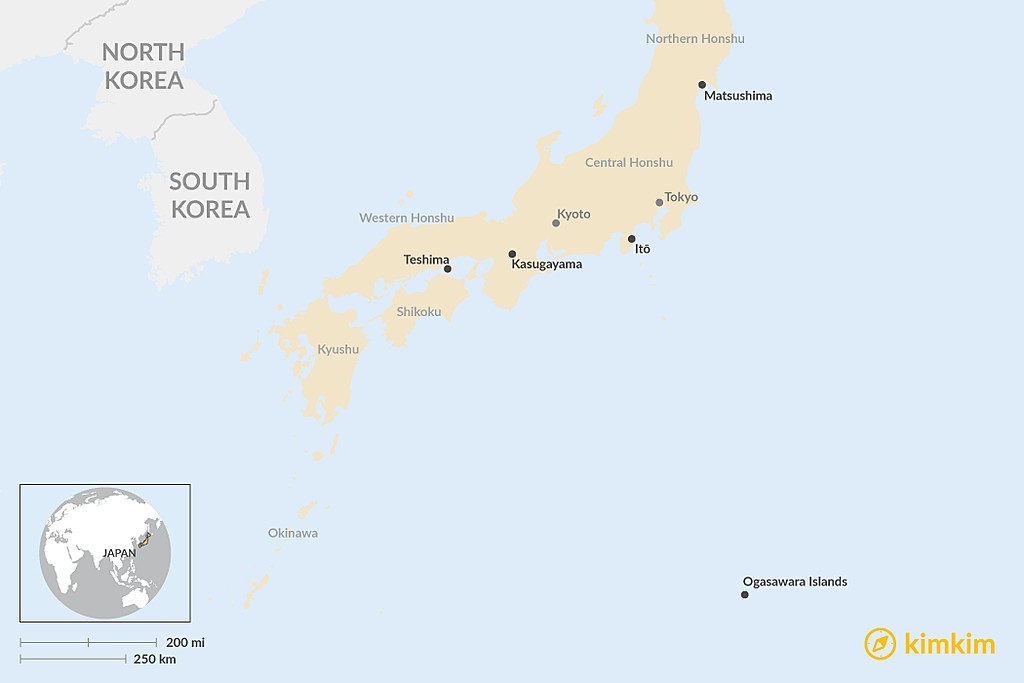
Most visitors to Japan hit up Kyoto’s temples, Tokyo’s shopping streets, and Osaka’s food scene—but there’s much more to this country than what you’ll find in its cities. Soak in natural hot springs, hike through primeval forest, and spot wildlife on a pristine chain of islands with these under-the-radar suggestions.
Japan, a land renowned for its vibrant culture, bustling cities, and delectable cuisine, also harbors a collection of incredible, often overlooked natural wonders. Beyond the well-trodden paths of temples and neon-lit streets, lies a realm of serene beauty waiting to be discovered. Consider, for instance, the Izu Peninsula, a testament to the earth’s dynamic forces, forged from a series of submarine eruptions in the Philippine Sea approximately 20 million years ago. Or venture to the subtropical Ogasawara Islands, a remote archipelago with a unique ecosystem and a relatively recent history of human habitation, spanning only the last couple of centuries. Prepare to embark on a journey that unveils a whole new facet of this captivating country, a side that whispers tales of geological marvels and untouched landscapes.
## Itō, Izu Peninsula, Honshu
The Izu Peninsula, a verdant expanse sculpted by volcanic activity, offers a refreshing contrast to the urban landscapes that often define Japan. While Hakone, with its stunning vistas of Fujisan (Mount Fuji), remains a perpetually popular destination for Tokyo residents seeking the therapeutic embrace of hot springs, the Izu Peninsula presents an equally alluring alternative, brimming with natural *onsen* and easily accessible via a convenient two-hour train journey south from the bustling capital city.
Establish your base in the relaxed coastal city of Itō, a charming locale where families gather on weekends to partake in the time-honored tradition of line-fishing at the bustling harbor. From this vantage point, savor the picturesque bayside views of the diminutive resort island of Hatsushima, a jewel nestled in the azure waters. And, of course, no visit to Itō would be complete without indulging in the exquisite local sushi, a testament to the city’s prime location along the Sagami Bay, a marine sanctuary teeming with a vibrant array of sea life.
For those seeking a more active exploration of the region’s natural beauty, the Jōgasaki Kaigan trail presents an unparalleled opportunity to immerse yourself in the raw splendor of the Izu Peninsula. This captivating trail meanders past imposing lava rocks, sculpted by the relentless forces of nature, and through sun-dappled pine forests, where the air is filled with the invigorating scent of resin and earth. A highlight of the Jōgasaki Kaigan trail is undoubtedly the crossing of the impressive 157-foot long Kadowaki Suspension Bridge, an architectural marvel that offers breathtaking panoramic views of the rugged coastline. As you gaze upon the richly-hued waves crashing against the shore below, you may begin to understand the profound inspiration that drove Hokusai, the celebrated 19th-century *ukiyo-e* painter, to so passionately embrace the vibrant pigment known as Prussian Blue.
While many hikers choose to conclude their journey upon reaching the iconic lighthouse, which offers stunning 360-degree views of the surrounding landscape, consider continuing along the trail as it transforms into the engaging Jōgasaki Nature Study Course. This extension of the path leads you past the serene Renchakuji Temple, a place of quiet contemplation, and allows you to traverse dramatic sea cliffs and wander through dense, fern-covered forests, immersing yourself in the verdant heart of the Izu Peninsula. Ultimately, your hike will culminate at Izu-Kogen Station, where you can conveniently catch a bus or train back to your starting point in Itō. As an added bonus, Izu-Kogen Station even features a soothing onsen foot bath, providing the perfect opportunity to relax and rejuvenate your tired legs while awaiting your return transportation.
## Matsushima, Honshu
A visit to Japan’s renowned art museums, particularly those in Tokyo, provides a captivating glimpse into how the country’s artists have captured its essence over countless generations. However, a truly immersive experience awaits those who venture beyond the gallery walls and step directly into the landscapes that have served as the wellspring of inspiration for Japanese artists throughout history. These locations have fueled creativity for centuries.
When the esteemed 17th-century haiku master, Matsuo Bashō, first laid eyes upon the countless tiny, pine-covered islands that constitute the breathtaking Matsushima Bay, he declared that he had discovered the most beautiful spot in all of Japan. So captivated was he by the ethereal beauty of Matsushima that, on his first night in the area, he found himself unable to sleep, consumed by a sense of awe and wonder. In his writings, he described a place where “pines are of the freshest green and their branches are curved in exquisite lines, bent by the wind constantly blowing through them,” a testament to the enduring power of nature’s artistry.
The charming town of Matsushima, nestled in Northern Honshu, is now easily accessible as a convenient day trip from the vibrant city of Sendai. Visitors can retrace the footsteps of the celebrated poet by embarking on a scenic cruise through the bay, following the very same route that Bashō himself traversed more than 300 years ago. As you glide across the tranquil waters, be sure to keep a watchful eye out for Japanese cormorants, a distinctive type of seabird, as they dry their wings or skillfully hunt for fish amidst the picturesque scenery.
For those who prefer to explore the area on foot, a leisurely 15-minute hike west from the train station will lead you to the idyllic Saigyo Modoshi no Matsu Park, a vantage point that offers picture-perfect views of the pine-forested islets that define the beauty of Matsushima Bay. Consider timing your visit for the spring season, when the landscape is adorned with a breathtaking backdrop of delicate pink cherry blossoms, creating an unforgettable visual spectacle perfect for capturing stunning photographs.
## Kasugayama Primeval Forest, Nara, Honshu
Nara, with its venerable Buddhist temples and sacred Shintō shrines, holds a prominent position as one of Japan’s most cherished destinations. However, its popularity often translates into significant crowds, particularly those comprised of enthusiastic schoolchildren on field trips. Fortunately, it is not necessary to venture far from the well-trodden tourist paths to discover a tranquil escape from the hustle and bustle.
Just behind the revered Kasuga Taisha Shrine, nestled within Nara Park, lies the enchanting Kasugayama Primeval Forest, a sprawling woodland offering a network of scenic hiking trails that beckon nature enthusiasts and those seeking a respite from the urban environment. Logging and hunting have been strictly prohibited within the forest’s boundaries since the 9th century, allowing for the flourishing of abundant flora and fauna, including an impressive 175 distinct varieties of trees. As you explore the forest, be mindful of the possibility of encountering wild boar, who also consider this sacred woodland their home.
A variety of paths await your exploration within Kasugayama Primeval Forest, each offering a unique perspective on the area’s natural beauty. Consider following the historic Yagyu Road, retracing the steps of samurai warriors who once journeyed to Yagyu Village, a renowned center for swordmaking, in search of new blades. Along your chosen route, you may encounter ancient, moss-covered Jizo statues, traditionally adorned with red hats and bibs. This Buddhist deity serves as a protector of travelers, ensuring that you remain in good hands throughout your exploration of the forest.
## Ogasawara Islands
While many destinations aspire to be described as “off-the-beaten-path,” few truly embody this concept as profoundly as the Ogasawara Islands. This remarkable archipelago, recognized as a UNESCO World Heritage site, stands as a testament to the power of nature and the importance of conservation. The islands are home to a remarkable diversity of life, including 195 species of endangered birds, making it a haven for ornithologists and nature lovers alike.
Remarkably, the Ogasawara Islands remained uninhabited by humans until the first half of the 19th century, when a pioneering group of Europeans and Americans established the first colony of settlers. Today, the islands are technically part of the Tokyo prefecture, yet a visit here will transport you to a world far removed from the frenetic energy of Shibuya Crossing. The main island of Chichijima, where the majority of bars and hotels are situated, is a considerable 25-hour ferry journey from the capital, underscoring the islands’ remoteness and isolation.
However, the extensive travel time is undoubtedly a worthwhile investment for those seeking an unparalleled experience. The Ogasawara Islands offer a wealth of unforgettable activities, including the opportunity to swim alongside playful bottlenose dolphins, observe rare and captivating birdlife, marvel at the majestic presence of humpback and sperm whales, and rent a scooter to explore pristine, coral-filled beaches that epitomize the beauty of the Pacific Ocean.
## Teshima, Shikoku
Teshima, a small and sparsely-populated fishing island nestled in the serene Seto Inland Sea, might seem an unlikely location to find a thriving contemporary art scene. However, this unassuming island has emerged as a significant hub for artistic expression, not only hosting the renowned Setouchi Triennale, an international arts festival, but also serving as the permanent home for a collection of world-class public art installations.
The standout among these installations is undoubtedly the Teshima Art Museum, a collaborative masterpiece designed by artist Rei Naito and architect Ryue Nishizawa. Intended to evoke the image of a concrete water droplet, the museum embodies the passage of time and the ever-flowing rhythm of the seasons. Situated amidst a tranquil rice field, the minimalist structure invites visitors to enter and contemplate the ever-changing sky through a series of oval openings in the ceiling, creating a deeply immersive and meditative experience. Another notable beachside exhibit, the French-designed Les Archives du Coeur (Heart Archives), offers visitors the unique opportunity to record their own heartbeats, contributing to a collective archive of human emotion.
Beyond its artistic offerings, Teshima itself is a treasure to be explored, with its traditional-style houses, quaint fishing ports, and meticulously terraced fields that reflect the island’s rich agricultural heritage. Served by two convenient ferry lines, Teshima is easily accessible, and the village of Karato offers bicycle rentals, allowing visitors to embark on an unforgettable day of exploration, immersing themselves in the island’s natural beauty and artistic charm.


